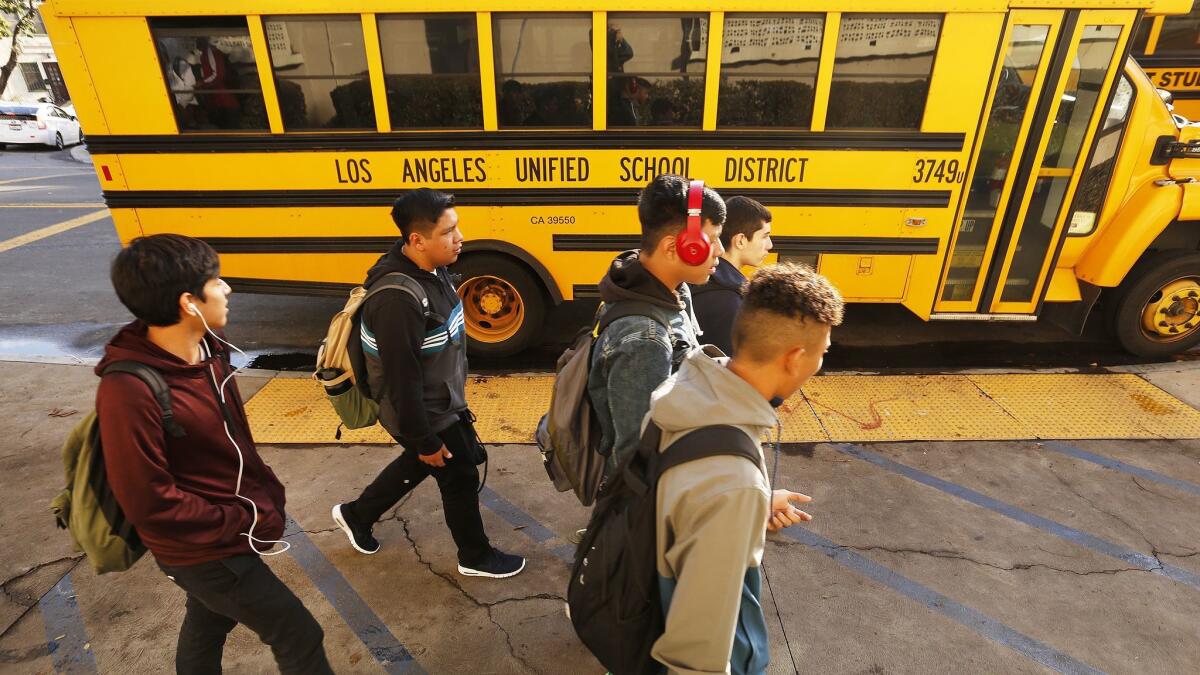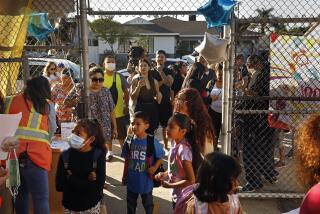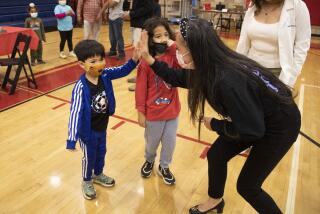Op-Ed: How we can get kids back to school safely during the pandemic

- Share via
Tuesday is the first day of school for nearly 700,000 students in Los Angeles Unified. Not one of them will be in a classroom.
They need to be, for both educational and social reasons. But the question is how to get students back to school safely. Health practices — spreading desks apart, wearing masks, washing hands, using electrostatic cleaning and upgrading HVAC systems — are crucial, but they won’t be enough.
That’s why Los Angeles Unified is launching a new effort that, with the support of three universities, a technology giant, innovative testing providers and health insurers, will provide a robust system of COVID-19 testing and contact tracing to serve all in the school community.
The testing and contact tracing program brings together the expertise of UCLA, Stanford and Johns Hopkins University. Microsoft is providing an application to help manage the effort and share information. Testing labs will provide timely results at a cost that makes the effort feasible. And health insurers Anthem Blue Cross and HealthNet will share their data to provide a more robust overall picture of how the novel coronavirus affects different communities.
The spread of COVID-19 in the Los Angeles area still exceeds the guidelines from the state of California setting out when it might be safe for students to return to school campuses. Any decision is some time away, which gives us time to build the program in a measured fashion.
We are currently fine-tuning systems and operational logistics. Then we will begin providing tests to staff currently working at schools as well as to any of their children participating in child care provided for Los Angeles Unified staff.
Tests will then be provided for all staff and students over a period of weeks to establish a baseline. On an ongoing basis, sample testing based on epidemiological models will be done for each cohort of staff and students.
Testing will also be provided to family members of students and staff who test positive for the coronavirus and family members who show symptoms. In the event of a positive test, contact can be made with others in the school community, including family members, to quickly isolate the virus.
The goal is to get students back to school as soon as possible while protecting the health and safety of all in the school community. And it will help keep them there if an isolated outbreak were to occur.
We expect the effort to also help point the way for COVID-19 workplace standards generally. A recent survey of our employees found that 88% felt a robust system of testing and contact tracing at schools would make them safer.
An effort like this is not simple and the scale is daunting. We expect the pilot program will encounter difficulties, some of which we can anticipate and others we cannot. Test results might be late, students or staff might be absent on the day of testing at a school, contact tracing efforts might not reach every family. But if it works, it can be a model for other school districts and communities across the country.
Schools, especially those in urban areas, are the front lines for dealing with societal issues — from poverty and childhood hunger to mental health and racial inequality. COVID-19 has exacerbated all of those and added new challenges. The virus is having a disproportionate impact on the families in our schools, 80% of whom live in poverty.
Since school facilities closed last spring, scientists have learned a lot more about the virus. It’s more contagious than they initially thought. People without symptoms can transmit the virus. Children can carry and spread the virus. And we know that reopening schools will significantly increase interaction between children and adults from different families and different generations.
Testing and contact tracing will cost money. We expect the effort in Los Angeles Unified to cost about $300 per student over the course of a year. But that is a small fraction of the $17,000 Californians invest each year to educate a student, and the dollars pale in comparison to the importance schools will play in reopening the world’s fifth-largest economy.
But this is really about something that can’t be measured in dollars and cents; it’s about creating opportunity for children. A good education is the path out of poverty for many students and the promise of a better future for all of them.
The opportunity to use testing to get ahead of the virus was missed in January and again in May due to a lack of capacity. Families in California and across the country are now looking at weeks or even months more of shutdown to reduce the overall level of the virus so communities and schools can reopen.
This time we must be ready with testing and contact tracing.
Austin Beutner is superintendent of the Los Angeles Unified School District.
More to Read
A cure for the common opinion
Get thought-provoking perspectives with our weekly newsletter.
You may occasionally receive promotional content from the Los Angeles Times.










